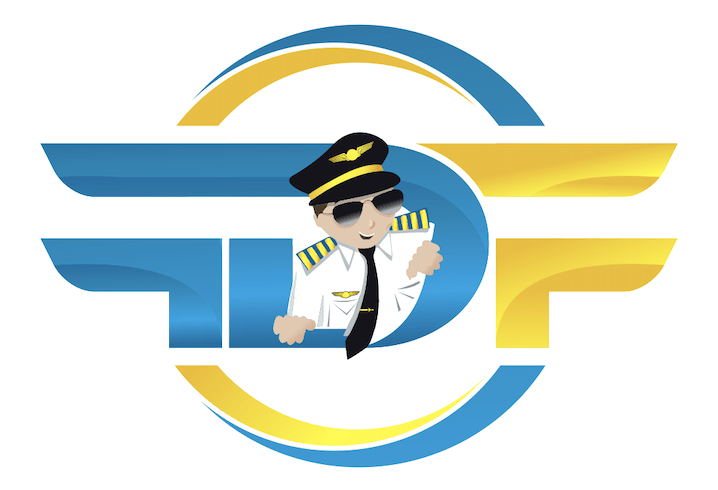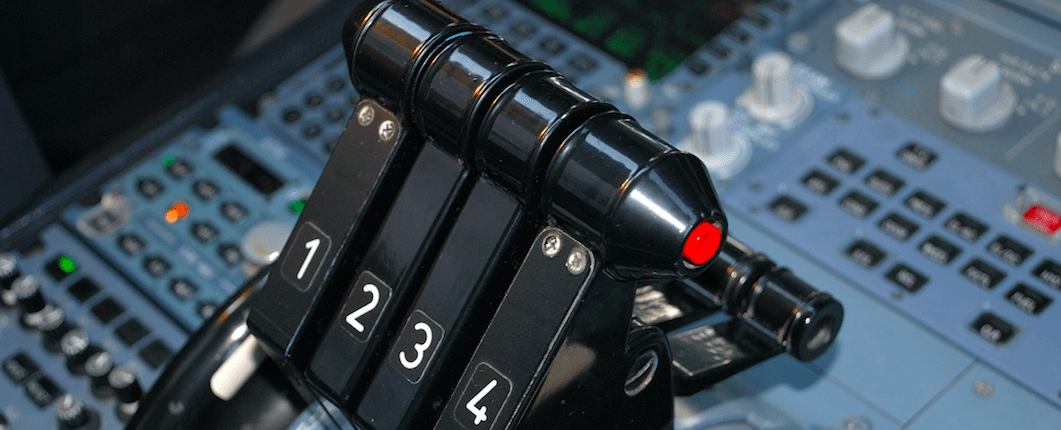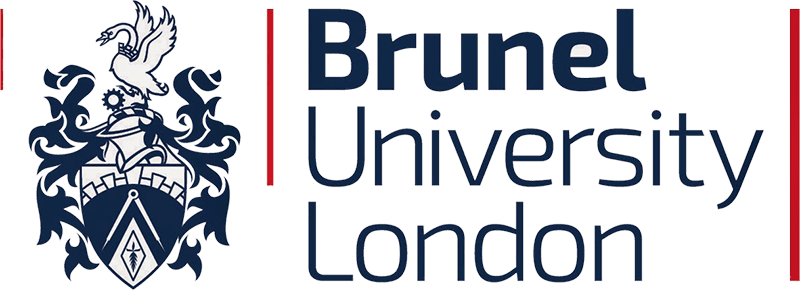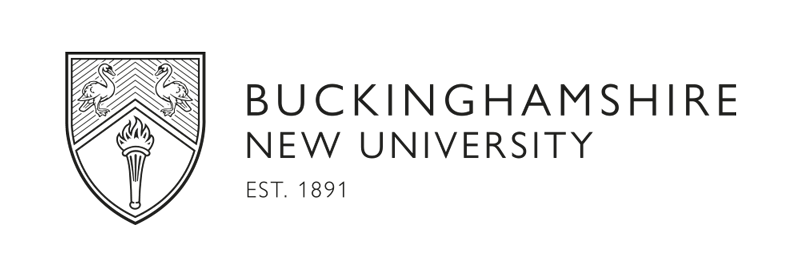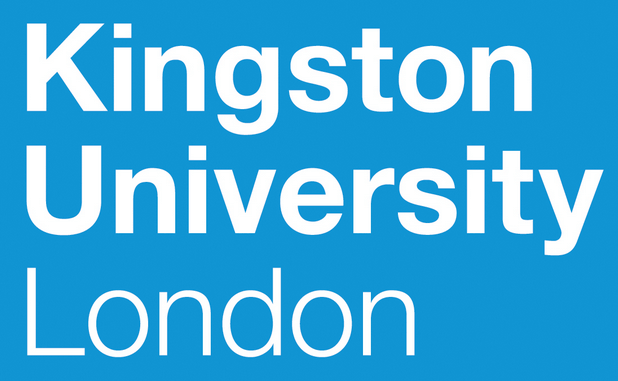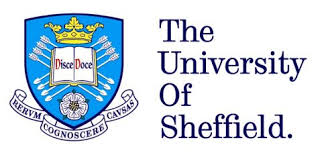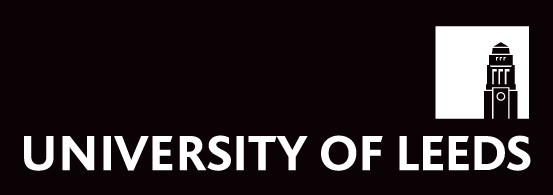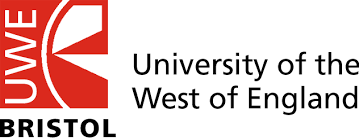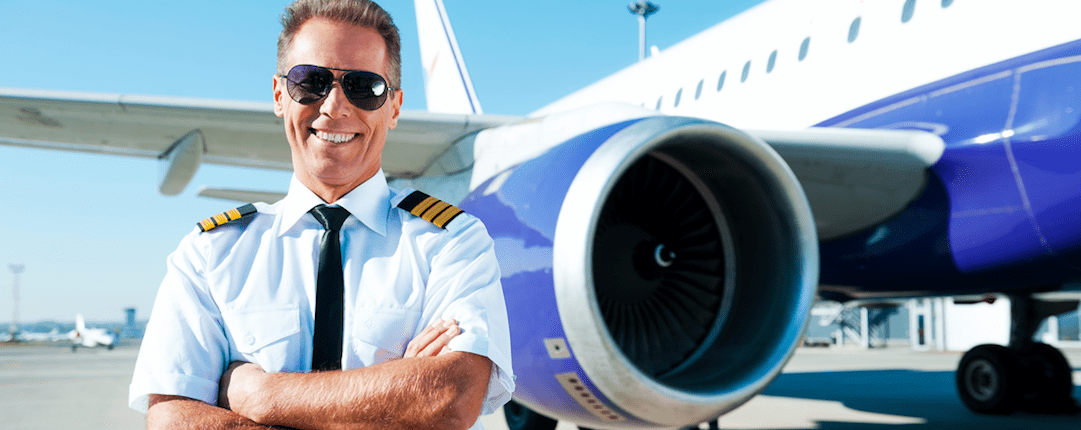Pay to Fly
FlightDeckFriend.com is against to Pay to Fly (P2F) or self sponsored line training. We will not advertise any job positions which require payment for line training.
What is ‘Pay to Fly’?
Pay-To-Fly is the name given to the practice of airlines charging pilots to be a Second or First Officer, at the controls of an aircraft for set number of flight hours, typically between 200 – 500, in order to gain experience. They operate as the First Officer (sometimes reffered to as the co-pilot) whilst under the supervision of a line training Captain and are usually being trained. Many people see this as morally wrong – you are paying to fly passengers when you should be being paid by the airline.
Why do people do it?
Many inexperienced pilots find themselves in a difficult situation, where most flying jobs require a certian level of commercial flying experience, but you can’t get this experience without getting a job. Some people therefore pay to gain some commercial flying experience, other wise known as pay to fly (P2F).
Should people do it?
No. You are lowering your future terms and conditions. If everyone took up this practice, no airline would pay a First Officer, you would be paying them. Presumably you are paying to fly because you want to be employed and be paid to fly an aircraft; this has the opposite effect. If everyone refused to pay to fly, they would have to pay you to build your experience. You are doing a highly skilled job that has taken years of training, don’t sell yourself short.
What is line training?
Line training is the final phase of training carried out to bring you up to “line standard”. This effectively means being able to operate the aircraft safely and to company standard. During line training you operate the aircraft, with passengers, under the supervision of a line training Captain who is providing you with tuition. This typically takes between 40 – 80 sectors (flights). Some cadet pilots are now financing their own line training in order to gain experience. This is known as paying to fly.
How much does it cost?
EagleJet are currently charging 35,500 Euros for 250 hours experience in a Boeing 737 Classic. Other companies charge as much as £50,000 for similar experience.
Flight Training Sponsorship Options
Flight Training Sponsorship Options
From September the 11th 2001 to 2019, very few airlines offered to sponsor commercial pilot training. Following 9/11, the travel demand dropped significantly and many pilots found themselves unemployed. Just as the industry was starting to recover with airline recruitment becoming widespread, along came the 2008 financial crisis and the effects of this were felt for ten years with many airlines going bust.
This started to change in 2019. There started to be a shift in attitude regarding cadet sponsorship from some airlines, with companies such as Aer Lingus and easyJet offering to sponsor the majority of the cost of flight training for some lucky cadets. Unfortunately, this positive momentum has been destroyed by the Covid-19 pandemic.
Due to the number of pilots who have found themselves out of work and the devastated finances of the airlines who survived, it is unlikely that flight training sponsorship will return any time soon.
There are still some organisations who offer grants or financial assistance, which we have listed below. If airlines start to reintroduce sponsored cadet programs, we will list them here.
The Honourable Company of Air Pilots (GAPAN) – January 2021
Formerly the Guild of Pilot and Navigators, the Honourable Company of Air Pilots offer a range of scholarships every year. This includes:
- Private Pilots Licence
- Theoretical Air Transport Pilots Licence Training
- Flight Instructor Ratings
- Jet Orientation Courses
- Gliding Scholarships
- Instrument Rating Bursaries
Airways Aviation – Part Flight Training Sponsorship – September 2019
Airways Aviation are now offering £15,000 towards the cost of the their integrated flight training program. Applicants must meet the same criteria as stated for their Integrated Training entry requirements whilst also being an UK or Irish Passport Holder. These include:
- Have a valid Class One Medical
- Hold 5 GCSE’s passes
- Be at least 18 years old
Matthew Martino Benevolent Fund (MMBF)
The fund welcomes applications from anywhere in the world and aims to support individuals whose careers are at standstill due to having no resources to move their careers forward. The foundation was formed by Mathetes Chihwai better known by his stage name Matthew C. Martino.
According to the MMBF’s website applicants will be allowed to apply for up to three different grants or sponsorships and although some grants are age restricted the Trustee’s will be open to reviewing applicants from other applicants who feel they qualify for sponsorship.
West Atlantic Cadet Program
West Atlantic usually run a fully sponsored cadet program approximately once a year. If you have a PPL, they offer to cover the costs of all of your flight training to obtain a frozen Air Transport Licence before going on to fly one of their aircraft.
To apply for the program you are required to hold the following:
- Private Pilots Licence (which can be sponsored through GAPAN)
- A Class One Medical (see our “Medical Requirements” section for more information)
- The right to live and work in the UK (European citizen)
What Should I Study at School to Become a Pilot?
What subjects should you study at school to become a pilot?
In order to become a commercial airline pilot, just about all airlines require you to have at least 5 GCSE’s that are grades A – C (or equivalent) including Maths, English and Science. At school, try and work hard in all subjects but in particular these three core areas. These are the very minimum qualifications that you should look to achieve.
Other than the core areas of Maths, Science and English, your choice of subjects at secondary education level doesn’t matter too much. Geography is likely to be a good choice for obvious reasons, but even subjects like music or art are likely to help you become well-rounded individual, something which the airlines are looking for.
Extra-Curricular Activity Ideas for Prospective Pilots
Whilst at secondary school or equivalent education, there a number of extracurricular activities that you can do which will help support development of the skills and attitude you need to become a pilot. It will also help to ensure that your CV stands out above the competition. Airline recruiters like to see someone who has actively been involved in activities above and beyond just simply turning up at school. These include:
Air Training Corps (Air Cadets) / Army / Navy Cadets – Joining your local Air Training Corps (ATC) squadron or other armed forces cadets is a big positive and you’ll find many pilots were once part of this organisation. It will help you to develop a skill set that is highly transferable to the role of commercial pilot, such as furthering your leadership, teamwork and communication skills. It will also give you the opportunity to have a go at flying for free to give you a taste of what flying a plane is really like.
Sports Teams – Get involved in a school or local sports team. This demonstrates the ability to work within a team and form social relationships, improving communication skills.
Duke of Edinburgh (DoE) Award – This covers a range of skills and attributes many of which are transferable to be successful in your flight training and flying career. Airline recruiters love it!
Scouts – a team-based organisation who take part in adventure exercises etc. You can join from a young age before transitioning to the Air Training Corps.
What should I study at A-Levels / Higher Education if I want to become a pilot?
Some airlines also require you to hold some A-Levels or a higher education equivalent. Regardless of which airline you are looking to apply to, we would recommend you complete your A-Levels, as most people who you are competing with for a position will hold such qualifications and you will be too young to apply for a cadet program on completion of your GCSEs. It also gives you the opportunity to build up some valuable life experience, such as having a part time job whilst studying.
We would suggest you choose some a couple of strong core subjects for your A-Levels / higher education, such as Maths, Physics, Chemistry, English and Geography. These subjects not only look good on paper, but will provide you with a sound theoretical foundation from which to go on and complete the theory side of your flight training, which is heavily science and maths based.
It’s fine to choose other subjects as well, airlines are seeking well rounded individuals, but a couple of core subjects is probably a good idea.
You should be looking to achieve a minimum of a grade C in all of your A-Level subjects.
During your A-Levels / higher education, try to keep involved in the extra-curricular activities as described above.
What Should I Study at University to Become a Pilot?
There are now lots of Aviation specific degree programs which incorporate commercial flight training so it is possible to obtain both a degree and commercial pilots’ licence at the same time.
However, whether to actually pursue this option is down to individual circumstances and the decision of whether or not to go to University is not an easy one. There are advantages and disadvantages to either option which are discussed on our dedicated page.
Ultimately you could start your very expensive flight training having already accrued £/€ 30,000 of debt if you live in a country where you pay to go to university. As pilots earn high salaries, you will almost certainly have to pay all of this debt back and it will be quite a chunk out of your payslip! Given you can start your flight training without a degree, is the extra debt and potential lost earnings worth it?
On the other side of the argument, if it all goes wrong, such as losing your pilot medical or get made redundant (due to something like the Covid-19 pandemic), if you’ve already got a degree at least you’ve got something to fall back on to support you getting a job outside of the aviation industry.
Our advice is that if you do choose to go to University, chose a subject that genuinely interests you as you are more likely to have a better experience and obtain a good classification. It might be beneficial to choose an aviation-based subject, but it isn’t essential. Airlines and flight training organisations would be happy to see a well recognised degree in a good subject on your CV, and perhaps consider one which gives you a fall-back career.
How Old Is Too Old – Flight Training
When are you too old to start commercial flight training?
It’s rare for people to start their commercial flight training over the age of forty, but it’s still achievable. Plenty of people spend many years saving the funds required to pay for their flight training and end up commencing their flight training at an age anywhere from their late twenties all the way through their forties. If you are asking the question ‘Am I Too Old?’ the answer is probably not if you really want it enough.
Background to Age vs Flight Training
For some it might be a case of saving until there is enough money in the bank to pay for training, for others it’s the desire to move on from a 9-5 office job and a pursue a career they never really thought it was possible to achieve; there are plenty of people who decide to start their flying careers later in life.
The reality is that you only become too old to start flight training when you can no longer hold a class one medical. However, if you are starting your training over the age of around forty, what you are looking to achieve takes some serious consideration. Like most decisions, deciding whether it is a worthwhile investment is very specific to individual circumstances taking into consideration current and future finances and family commitments.
When deciding whether you are too old to start flight training or not, ask yourself a few questions…
Can I afford not to get a job at the end of training?
If you have already saved the money to fund your flight training, rather than sourcing the finances (such as re-mortgaging the house) through a substantial loan, the risk and burden of not getting a job at the end of your flight training is probably less significant as you don’t have the worry about the need to make significant loan repayments.
If you don’t manage to land a flying job straight away, what is your contingency plan. Can you revert back to previous employment? Will you be able to afford the loan repayments if you don’t get a flying job straight away?
Do I have a career/job to fall back on if I don’t make it?
If you’ve sourced a loan or re-mortgaged a house, do you have a good career to fall back on to keep paying the bills if you don’t get a job as a First Officer when you finish training?
Do I have a good idea about the realities of the day to day life of an airline pilot?
Make sure you are well researched on what the life style realities of an airline pilot are. Speak to current pilots about their lifestyle and compare it to your quality of life. Weekends, Bank Holidays, Christmas’s and are all normal working days at most airlines which could affect your family or social life considerably.
If you and your family are used to a Monday – Friday 9 to 5 job, being away from home for a few days at a time, working weekends, late nights and early mornings might come as a bit of shock.
How will I feel about spending a vast sum of money on a licence I might never use?
Will you live with regret it if you spend all your savings on flight training but never get a flying job at the end of it? Might you be better off simply getting a Private Pilot’s Licence and enjoying flying as a hobby?
Do I have the support of my family? Do they understand the implications (time and financial) of changing careers?
If you have a family, the decision to start commercial flight training will affect everyone. Make sure they understand the various commitments that will be required of you in your new career.
Am I prepared to take a pay cut?
If you’re in a well paid job, you may well take a pay cut to become a First Officer. You may even have to pay another £25,000 on a type rating should you be offered a job. How will this affect your quality of life? Might it be better to get a PPL and fly for fun?
Is moving countries feasible to find a job?
Airline pilot jobs in the UK are often few and far between for inexperienced pilots. In the event of there being no jobs available, are you prepared to relocate you and your family to another country?
How is my salary effected?
When joining an airline at the age of forty-five, your potential future earnings are considerably lower than that of a twenty-five-year-old. With a likely investment of between £50,000 – £100,000 in your training, making a financial return on your investment might require you to go straight into a well-paid First Officer position. This is by no means guaranteed, no matter which method of training you choose.
A full-time training course would mean the loss of around 2 years earnings. You need to factor this into your total costings and budget.
Impact of Training
The time investment and subsequent impact on family life also has the potential to be significant. If you were to choose an integrated course, maintaining a normal family life would be very difficult given its intensity and commitment required. A modular course would offer more flexibility in this respect, and you would also have the benefit of being able to complete the training at your own pace whilst being in employment. This route obviously takes longer and requires significant self-discipline.
Career Progression
If your dream is to Captain a long-haul jet like the B777 or A380, you’re going have less chance of achieving this when starting your aviation career in later years. A forty-five-year-old has a maximum of twenty years left of a flying career, assuming your medical is maintained. At some long-haul airlines, it can take 15 to 20 years to be promoted to Captain so you need to be realistic about what you can expect in terms of career progression.
Discrimination
In Europe it is illegal for an employer to discriminate against age. Whilst European airlines should not place an age limitation on applications, there is speculation that some would prefer to recruit younger First Officers where possible.
Whilst it’s open to debate, some people suggest that younger cadets learn at a quicker pace and are better at taking on new information. Younger candidates are less likely to have family commitments and are therefore more flexible with regards to lifestyle.
When airlines recruit cadets, they are looking to recruit future captains. If on application you’re of an age where you are unlikely to ever reach command, would the airline prefer a younger candidate. They couldn’t discriminate against age legally, but it’s often thought that it happens.
Age Can be Valuable
All of the above being said, life experience and maturity are desirable attributes for pilots and airlines should therefore always be looking for a well-rounded mix of pilots from all demographics.
Older pilots who have worked elsewhere may appreciate the job more than those pilots who started flying at a very young age and never really experienced a ‘proper job’.
Aviation Abbreviations
The world of aviation abbreviations and acronyms is huge. More and more acronyms keep arriving and it will take an entire career to have heard and used them all! If you’ve got one in mind that you can’t find, give us at FlightDeckFriend.com an email and we’ll get it added.
A
AA – Acceleration Altitude
A/A – Air to Air
AA – Anti Aircraft
AA – American Airlines
AAIB – Air Accident Investigation Branch
AAL – Above Aerodrome Level
ALPHA – Angle of Attack
AB – Auto Brake
ABP – Able Bodied Passengers
AC – Alternating Current
A/C – Aircraft
ACARS – Aircraft Communication Addressing and Reporting System
ACN – Aircraft Classification Number
ACP – Auto Control Panel
AD – Airworthiness Directive
ADC – Air Data Computer
ADF – Automatic Direction Finder
ADI – Attitude Director Indicator
ADU – Air Data Unit
AFE – Above Field Elevation
AGL – Above Ground Level
AH – Artificial Horizon
AI – Altitude Indication
AIP – Aeronautical Information Publication
ALS – Approach Lighting System
ALT – Altitude
AMSL – Above Mean Sea Level
ANC – Aviate, Navigate, Communicate
AoA – Angle of Attack
AOC – Air Operators Certificate
AOG – Aircraft on Ground (due to a technical defect)
AOM – Airport Operating Minima
AP – Auto Pilot
AP – Aeroplane
APFDS – Auto Pilot Flight Director System
APP – Approach
APS – Airline Pilot Standard (MCC Course)
APT – Airport
APU – Auxiliary Power Unit
ANC – Aviate Navigate Communicate
ANP – Actual Navigation Performance
AR – Aspect Ratio
AR – Authorisation Required (RNAV Approaches)
ARP – Aerodrome Reference Point
ASDA – Accelerate Stop Distance Available
ASI – Airspeed Indicator
ASL – Above Sea Level
ASR – Airport Surveillance Radar
ASR – Air Safety Report
AT – Auto Throttle
ATA – Air Transport Association
ATC – Air Traffic Control
ATC – Air Training Corps
ATIS – Automatic Terminal Information Service
ATM – Air Traffic Management
ATP – Airline Transport Pilot
ATS – Air Traffic Service
ATPL – Air Transport Pilots Licence
ATZ – Air Traffic Zone
B
BA – Braking Action
BA – British Airways
BAA – British Airport Authority
BAA – Baltic Aviation Academy
BACF – British Airways Cityflyer
BALPA – British Airline Pilots Association
BARO – Barometric
BCS – Back Course (ILS)
BPR – By-Pass Ratio
BRK – Brookfield
BST – British Summer Time
BT – Backtrack
BTB – Back to Back
C
CA – Critical Area (ILS)
CAA – Civil Aviation Authority
CAE – A flight training organisation (OAA)
CAS – Calibrated Air Speed
CAT – Category (ILS)
CAT – Clear Air Turbulence
CAVOK – Ceiling and Visibility OK
CB – Circuit Breaker
CB – Cumulonimbus
CBT – Computer Based Training
CC – Cabin Crew
CC – Crew Control
CC – Company Council (BALPA Related)
CDA – Continuous Descent Approach
CDFA – Continuous Descent Final Approach
CDI – Course Deviation Indicator
CDU – Control Display Unit
CFI – Chief Flying Instructor
CFIT – Controlled Flight into Terrain
CGI – Chief Ground Instructor
CL – Center Line
CLB – Climb
CMD – Command
CMV – Converted Meteorological Visibility
COBT – Calculated Off Block Time
CoG – Centre of Gravity
CON – Contingency Fuel
CON – Max Continuos Thrust
CP – Chief Pilot / Cadet Program / Cadet Pilot
CP – Critical Point
CPDLC – Controller Pilot Data Link Communications
CPL – Commercial Pilots Licence
CPT – Captain
CRM – Crew Resource Management
CRMI – Crew Resource Management Instructor
CRZ – Cruise
CSM – Cabin Service Manager
CSS – Cabin Service Supervisor
CTC – British Integrated Flight Training Organisation
CTC – Chief Training Captain
CTOT – Calculated Take Off Time
CTR – Control Zone
CTZ – Control Zone
CVR – Cockpit Voice Recorder
CWS – Control Wheel Steering
CX – Checks
D
DA – Decision Altitude
DALR – Dry Adiabatic Lapse Rate
DC – Direct Current
DDG – Dispatch Deviation Guide
DEC – Direct Entry Captain
DER – Departure End (of the) Runway
DG – Dangerous Goods
DH – Decision Height
DI – Direction Indicator
DIV – Diversion
DLC – Data Link Clearance
DLR – Aptitude Testing Used by Lufthansa
DME – Distance Measuring Equipment
DNF – Did Not Fly
DODAR – Diagnose/Options/Decide/Assign/Review
DOC – Designated Operating Coverage
DOW – Dry Operating Weight
E
EASA – European Aviation Safety Agency
EAT – Estimated Approach Time
ECL – Electronic Checklist
EET – Estimated Elapsed Time
EFB – Electronic Flight Bag
EFIS – Electronic Flight Information System
EGT – Exhaust Gas Temperature
EGPWS – Enhanced Ground Proximity Warning System
EHSI – Electronic Horizontal Situation Indicator
ELT – Emergency Locator Transmitter
ELW – Estimated Landing Weight
EMB – Embraer
EMR – Emergency
EPR – Engine Pressure Ratio
ET – Elapsed Time
ETA – Estimated Time of Arrival
ETOPS – Extended-range Twin-engine Operational Performance Standards
ETOW – Estimated Take Off Weight
ETP – Emergency Turn Procedure
EZFW – Estimated Zero Fuel Weight
EZY – easyJet (ICAO Code)
F
FA – Flight Attendant
FATPL – Frozen Air Transport Pilots Licence
FAA – Federal Aviation Administration
FADEC – Full Authority Digital Engine Control
FAF – Final Approach Fix
FAP – Final Approach Point
FAR – Fedral Aviation Regulation
FAT – Final Approach Track
FBS – Fixed Based Simulator
FBT – Fixed Based Trainer
FBW – Fly By Wire
FCL – Flight Crew Licensing
FCOM – Flight Crew Operations Manual
FCTM – Flight Crew Training Manual
FD – Flight Director
FDR – Flight Data Recorder
FE – Flight Engineer
FF – Fuel Flow
FFS – Full Flight Simulator
FI – Flight Instructor
FIR – Flight Information Region
FIS – Flight Information Service
FLCH – Flight Level Change
FMA – Flight Mode Announciation
FMC – Flight Management Computer
FMS – Flight Management System
FNPT – Flight & Navigation Procedures Trainer
FO – First Officer
FOM – Fuel of Merit
FOD – Foreign Object Damage
FPA – Flight Path Angle
FPL – Filed Flight Plan
FPM – Feet Per Minute
FPP – Future Flyer Programme
FPT – Flat Panel Trainer
FPV – Flight Path Vector
FREQ – Frequency
FT – Flight Training
FTE – Flight Training Europe, Jerez
FTL – Flight Time Limitations
FTO – Flight Training Organisation
G
G – G-force
GA – General Aviation
G/A – Go Around
GAPAN – The Guild of Air Pilots & Air Navigators
GC – Great Circle
GE – General Electric
GENDEC – General Decleration
GH – General Handling
GI – Ground Instructor
GLONASS – Global Orbiting Navigation System
GND – Ground
GNSS – Global Navigation Satellite System
GP – Glide Path
GP – Guidance Panel
GPA – Glide Path Angle
GPS – Global Positioning System
GPWS – Ground Proximity Warning System
GS – Ground School
GS – Ground Speed
GS – Glide Slope
H
HDG – Heading
HDG SEL – Heading Select
HEA – High Energy Approach
HF – Human Factors
HF – High Frequency
HIALS – High Intensity Approach Lighting System
HIL – Hold Item List
HoT – Head of Training
HOT – Hold Over Time (Anti-icing)
HPA – Hectopascal
HP – Horse Power
HP – High Pressure
HPT – High Pressure Turbine
HSI – Horizontal Situation Indicator
HST – Hypersonic Transport
HUD – Head Up Display
HWC – Head Wing Component
HYD – Hydraulics
I
IAA – Irish Aviation Authority
IAC – Instrument Approach Chart
IAP – Instrument Approach Procedure
IAF – Initial Approach Fix
IALPA – Irish Airline Pilots Association
IAP – Instrument Approach Procedure
IAS – Indicated Air Speed
IATA – International Air Transport Association
IC – In Command
ICAO – International Civil Aviation Organisation
IDG – Integrated Drive Generator
IFR – Instrument Flight Rules
ILS – Instrument Landing System
IMC – Instrument Meteorological Conditions
INOP – Inoperative
INS – Inertial Navigation System
IR – Instrument Rating
IRS – Inertial Reference System
IRST – Instrument Rating Skills Test
IRU – Inertial Reference Unit
ISA – International Standard Atmosphere
ITCZ – Intertropical Convergence Zone
J
JAA – Joint Aviation Authorities
JAR – Joint Aviation Requirements
JFO – Junior First Officer
JOC – Jet Orientation Course
JS – Jump Seat
K
kHz – Kilohertz
KIAS – Knots Indicated Airspeed
KM – Kilometres
KPH – Kilometres per hour
KTS – Knots
L
LCC – Low Cost Carrier/s
LCK – Line Check
LCTR – Locator
LD – Landing Distance
LDA – Landing Distance Available
LDA – Low Drag Approach
LDR – Landing Distance Required
LG – Landing Gear
LHO – Live Human Organs
LHR – London Heathrow
LLZ – Localiser
LOC – Localiser
LOE – Line Orientated Exercise
LOFT – Line Oriented Flight Training
LORAN – Long Range Navigation
LNAV – Lateral Navigation
LP – Low Pressure
LPC – Line Proficiency Check
LRU – Line Replaceable Unit
LSK – Line Select Key
LSS – Local Speed of Sound
LST – Line Skills Test
LT – Line Training
LT – Local Time
LT – Leadership Team
LTC – Line Training Captain
LTP – Landing Threshold Point
LVL – Level
LVO – Low Visibility Operations
LVP – Low Visibility Procedures
LW – Landing Weight
M
MAA – Military Aviation Authority
MAA – Missed Approach Altitude
MAC – Mean Aerodyanamic Chord
MACG – Missed Approach Climb Gradient
MAP – Missed Approach Point
MATZ – Military Air Traffic Zone
MCC – Multi Crew Cooperation Course
MCP – Mode Control Panel
MCRIT – Critical Mach Number
MCT – Maximum Continuous Thrust
MDA – Minimum Decent Altitude
MDH – Minimum Decent Height
ME – Multi Engine
MEA – Minimum Enroute Altitude
MEL – Minimum Equipment List
MMEL – Master Minimum Equipment List
MEP – Multi Engine Piston
MET – Meteorological
METAR – Meteorological Aerodrome Report
MFRA – Minimum Flap Retraction Altitude
MLM – Maximum Landing Mass
MLS – Microwave Landing System
MLW – Maximum Landing Weight
MM – Middle Marker
MMO – Maximum Mach Number
MOA – Memorandum of Agreement
MOC – Minimum Obstacle Clearance
MOR – Mandatory Occurance Report
MORA – Minimum En-route Altitude
MPA – Multi Pilot Aircraft
MPL – Multi-Crew Pilots Licence
MPS – Meters Per Second
MRO – Maintenance, Repair and Overhaul
MRW – Maximum Ramp Weight
MSA – Minimum Sector/Safe Altitude
MSL – Mean Sea Level
MTOW – Maximum Take Off Weight
MZFW – Maximum Zero Fuel Weight
N
N1 – Low Pressure Compressor Speed
N2 – High Pressure Compressor Speed
NADP – Noise Abatement Departure Procedure (1 or 2)
NAT – North Atlantic
NAT-OTS – North Atlantic Organised Track System
NATS – North Atlantic Track System
NATS – National Air Traffic Service
NAV – Navigation
ND – Navigation Display
NDB – Non Directional Beacon
NG – Next Generation
Nigel – A British Airways Pilot (Slang)
NM – Nautical Mile
No1 – Number One (Senior Cabin Crew Member)
NOTAM – Notice to Airmen
NOTECH – Non Technical Skills
NPA – Non-Precision Approach
NPPL – National Private Pilots Licence
NSC – No Significant Cloud
NTS – Non Technical Skills
NTSB – National Transportation Safety Board
NWS – Nose Wheel Steering
O
OAA – Oxford Aviation Academy (UK Integrated School)
OAT – Outside Air Temperature
OB – Off/On Blocks
OBS – Omni Bearing Selector
OC – Operations Control
OCA – Obstacle Clearance Altitude
OCA – Oceanic Control Area
OCC – Operators Conversion Course
OCH – Obstacle Clearance Height
OEA – One Engine Approach
OEI – One Engine Inoperative
OEM – Original Equipment Manufacturer
OFP – Operational Flight Plan
OM – Operations Manual
OM – Outer Marker
OPC – Operator Proficiency Check
OTP – On Time Performance
OTS – Organised Track System
OTS – Out of Service
QTY – Quantity
OW – Operational Weight
OXY – Oxygen
O2 – Oxygen
P
P1 – Pilot in Command
P2 – Pilot Second in Command
PA – Public/Passenger Announcement
Packs – Air Conditioning Units
PANS-OPS – Procedures for Air Navigation Services
PAPI – Precision Approach Path Indicator
PAR – Precision Approach Radar
PAX – Passenger/s
PBN – Performance Based Navigation
PCN – Pavement Classification Number
PDC – Pre-departure Clearance
PET – Point Of Equal Time
PF – Pilot Flying
PFD – Primary Flight Display
PFL – Practice Forced Landing
PIC – Pilot in Command
PICUS – Pilot in Command Under Supervision
PIO – Pilot Induced Oscillations
PIREP – Pilot Report
PoB – Passengers on Board
PoF – Principles of Flight
POH – Pilot’s Operating Handbook
PM – Pilot Monitoring
PNF – Pilot Not Flying
PNR – Point of No Return
PPL – Private Pilots Licence
PPR – Prior Permission Required
PRNAV – Precision Area Navigation
PSI – Pressure per square inch
PSR – Point of Safe Return
PSR – Purser (No 1 Cabin Crew)
PT – Progress Test
PTT – Push to Talk
PUT – Pilot Under Training
Q
QDM – Magnetic heading to a station
QDR – Magnetic Bearing from a station
QFE – Field Elevation (Pressure Setting)
QNH – Regional Pressure Setting
QRA – Quick Reaction Alert
QRH – Quick Reference Handbook
R
RA – Radio Altimeter
RA – Radio Altitude
RA – Resolution Advisory
RAD ALT – Radio Altimeter
RADAR – Radio Detection and Ranging
RAF – Royal Air Force
RAS – Rectified Airspeed
RAT – Ram Air Turbine
REL – Runway Edge Lights
RESA – Runway End Safety Area
RET – Rapid Exit Taxiway
RFFS – Resuce & Fire Fighting Services
RMI – Radio Magnetic Indicator
RN – Royal Navy
RNAV – Area Navigation
RNP – Required Navigation Performance
RPL – Repetitive Flight Plan
RPM – Revolutions Per Minute
RT – Radio Telephony
RTB – Return to Base
RTFQ – Read The F**k**g Question
RTO – Rejected Take Off
RTS – Return to Stand
RTS – Return to Service
RVR – Runway Visual Range
RVSM – Reduced Vertical Separation Minima
RW – Runway
RWY – Runway
S
SADLR – Saturated Adiabatic Lapse Rate
SAR – Search and Rescue
SAT – Saturated Air Temperature
SATCOM – Satellite Communication
SCCM – Senior Cabin Crew Member
SE – Single Engine
SELCAL – Selective Calling
SEP – Single Engine Piston
SEP – Safety and Emergency Procedures
SFI – Synthetic Flight Instructor
SFO – Senior First Officer
SHF – Super High Frequency
SIC – Second In Command
SID – Standard Instrument Departure
SIGMET – Significant meteorological advisory
SLF – Self Loading Freight (Passengers)
SLOP – Strategic Lateral Offset Procedures
SLP – Speed Limit Point
SM – Statute Mile
SMR – Surface Movement Radar
S/O – Second Officer
SOP’s – Standard Operating Procedures
SOS – Save our Souls (Distress call)
SPIC – Student Pilot In Command
SR – Sunrise
SRA – Surveillance Radar Approach
SS – Sunset
SSR – Secondary Surveillance Radar
SST – Supersonic Transport
STA – Scheduled Time of Arrival
STAR – Standard Terminal Arrival Route
STD – Scheduled Time of Departure
STD – Standard (Pressure Setting 1013mb)
T
TA – Transition Altitude
TA – Traffic Advisory
TAA – Terminal Arrival Area
TAA – Terminal Arrival Altitude
TACAN – Tactical Air Navigation
TAF – Terminal Area Forecast
TAF – Aerodrome Forecast
TAFB – Time Away From Base
TAS – True Airspeed
TAT – Total Air Temperature
TCA – Terminal Control Area
TCAS – Traffic Collision Avoidance System
TCH – Threshold Crossing Height
TDZ – Touch Down Zone
TECH – Technical
TEM – Threat and Error Management
TERPS – Terminal Procedures
TFC – Traffic
THOB – Total Heads On Board
THLD – Threshold
THLD – Thrust Hold
THR – Threshold
TKI – Theoretical Knowledge Instructor
TL – Transition Level
TLA – Thrust Lever Angle
TMA – Terminal Manoeuvring Area
TMI – Track Message Identification
T/O – Take Off
TO/GA – Take Off Go Around
TOC – Take Off Configuration
TOC – Top Of Climb
TOD – Top Of Descent
TODA – Take Off Distance Available
TORA – Take Off Run Available
TOW – Take Off Weight
TP – Turbo Prop
TR – Type Rating
TRE – Type Rating Examiner
TRI – Type Rating Instructor
TRTO – Type Rating Training Organisation
TRU – Transformer Rectifier Unit
TS – Thunderstorm
TT – Total Time
TTL – Total
TWC – Tail Wind Component
TWR – Tower
TWY – Taxiway
U
UA – Unusual Attitude
UAS – University Air Squadron
UAV – Unmanned Air Vehicles
UFO – Unidentified Flying Object
UHF – Ultra High Frequency
UIR – Upper Flight Information Region
U/S – Unserviceable
USAF – United States Air Force
UTC – Universal Co-ordinated Time (Zulu)
V
VA – Virgin Atlantic
VAAC – Volcanic Ash Advisory Center
VAC – Volcanic Approach Chart
VASI – Vertical Approach Slope Indicator
VFE – Maximum Flap Extension Speed
VFR – Visual Flight Rules
VHF – Very High Frequency
VIP – Very Important Person
VIMD – Maximum Drag Speed
VLE – Maximum Landing Gear Extended Speed
VMC – Visual Meteorological Conditions
VMCA – Minimum Control Speed Airborne
VMCG – Minimum Control Speed Ground
VMO – Maximum Indicated Airspeed
VNAV – Vertical Navigation
VNE – Never Exceed Speed
VNO – Normal Operating Speed
VOLMET – Meterlogical Information In Flight
VOR – VHF Omni Directional Radio Range
VR – Rotate
VRB – Variable
VS – Vertical Speed
VSI – Vertical Speed Indicator
VTOL – Vertical Take Off and Landing
VIP – Very Important Person
VV – Vertical Visability
VVIP – Very Very Important Person
VX – Best Angle of Climb Speed
VY – Best Rate of Climb Speed
W
WILCO – Will Comply
WIP – Work In Progress
WOCL – Window of Circadian Low
WPT – Way Point
X
WX – Weather
XPDR – Transponder
XWC – Cross Wind Component
Z
Z – Zulu Time (Same as UTC and GMT)
ZFT – Zero Flight Time
ZFW – Zero Fuel Weight
What Qualifications are Required to be a Pilot?
What Qualifications / Education do you Need to be a Pilot?
To hold the licences required to fly a commercial passenger jet, you do not need any formal academic qualifications. However, you may need some level of academic qualifications to attend a specific flight school or join a particular airline.
To fly a commercial passenger aircraft as a First Officer with an airline, you generally need the following credentials as an absolute minimum:
- A frozen Air Transport Pilots Licence (ATPL) which consist of a CPL / MEIR / MCC & ATPL Theory (see what these are and how to get them here)
- A Class One Medical
- Be over the age 18
- Have a reasonable command of the English language
- Hold a valid, unrestricted passport
- Have the right to live and work in the country in which the airline is based
Academic Qualifications Required to Become a Pilot
Some airlines will require you to have a minimum level of academic qualifications to employee you as a pilot. As an absolute minimum, this typically requires completion of secondary school or high school education to a good pass level. In counties like the UK, this consists of 5 GCSE passes, grades A-C, including Maths, English & Science. In other countries this might be a Secondary School Certificate (SSC) to a reasonable standard.
Whilst some legacy airlines have previously required applicants to hold at least 2 A-Levels with grades A-C, this has been replaced with a minimum UCAS point requirement to ensure qualifications such as BTECs, apprenticeships, and international qualifications are considered.
easyJet requires that their pilot applicants to hold 5 GCSEs grades A-C, whilst others do not require you to have any academic qualifications to apply as a pilot. The Aer Lingus Future Pilot Program required applicants to have passed their Leaving Certificate in 6 or more subjects, and have at least 2 higher level subjects with a minimum of H5 grades in the Leaving Certificate.
In the United States and some Asian countries, it is typical that major airlines require you to hold a university degree level qualification (often consisting of 4 or more years of study) as a minimum requirement.
What level of education is flight training equivalent to?
The difficulty of the theoretical ATPL training is probably the equivalent of somewhere between GCSE and A-Level standard. Many people don’t find the ATPL theory syllabus to be particularly difficult, but do find the amount of information that you are required to process and retain, to be overwhelming at times.
Your academic abilities and learning style might help choose the route you take to getting a Commercial Pilots Licence. For example, if you complete a full-time integrated course, you need to absorb a huge amount of information in a short space of time when compared to a part-time modular course, where you can pace out your theoretical studies if you need. The intensity of the integrated courses is one of the reasons why some airlines have historically recruited cadets who have completed an integrated course; they have shown an ability to take on a huge amount of information in a short space of time, something which you will need to demonstrate when you first join the airline and complete their specific training.
I didn’t do well at school, can I still become a pilot?
Whilst you don’t strictly require any educational qualifications to hold a commercial pilots licence, if you are unable to achieve a reasonable standard at the core subjects (such as Maths & Science) at the secondary education level (GCSEs etc.), you may well struggle with the 14 ATPL theoretical exams.
That being said, everyone is different and some people are late starters. You may not have done particularly well at school but have gone on to gain the equivalent skills and knowledge through life and work experience. If this is you, becoming a pilot is still achievable providing you have developed enough knowledge about Maths and Physics before starting the course.
If in doubt about your ability to become a pilot, have a chat to the various flight training schools out there and see what they think. Most flight training organisations have entrance tests that must be passed in order to be accepted onto their course, and these are good at identifying individuals who might struggle with the training.
Flight Training Schools
Whilst you might not require any academic qualifications to obtain a Commercial Pilots Licence, if you want to get the qualification at a reputable flight school through a full-time integrated training program, some flight schools require you to have a minimum level of qualifications.
At somewhere like FTEJerez, they require at least 2 A-Levels at grade C or above or grade 4 or above in the equivalents such as Baccalaureate, Bachillerato, Highers, Leaving Certs., Maturitá etc. Whereas CAE only state that you must have completed your secondary education.
What qualifications should I be aiming for to become a pilot?
Whilst not achieving a high standard of education won’t necessarily put a stop to your aviation career, getting some good grades at a higher education level (A-Level or equivalent), will ensure that there are plenty of options for you in terms of flight training schools and then airlines to apply to. Given you can’t start your flight training until you are 18, you might as well seek to obtain some higher education level qualifications if you can.
Should I go to University?
Deciding on whether to go to university or not is quite a big subject and we’ve given it its own page.
Day-to-Day Life as an Airline Pilot
What is the Day to Day Life Like as an Airline Pilot?
Being a pilot can be a very rewarding career, both financially and in terms of job satisfaction, but it is important to know both the ups and downs of the profession. It’s also important to know what you are looking for in a piloting career as this could significantly impact on the type of flying you are best suited for and the airline you should aim to work for.
Airline Pilot Pay
Flight crew undertake intensive and expensive training to develop a highly unique and perishable skill set. As a result, pilots are generally well paid, typically earning significantly above the average salary – varying between around £30,000 to over £200,000 depending on seniority, aircraft and airline. The remuneration can vary considerably from company to company, but generally speaking, low-cost carriers tend to pay less than the flag carriers, and as one might expect, the bigger the aircraft and the further you fly, the higher the pay.
Staff Travel Discounts for Pilots
Most airlines will also offer excellent staff travel packages, with flag carriers typically offering 90% off their ticket prices for you and your family. This means you might be able to travel from London to New York in First or Business Class for as little as £150.
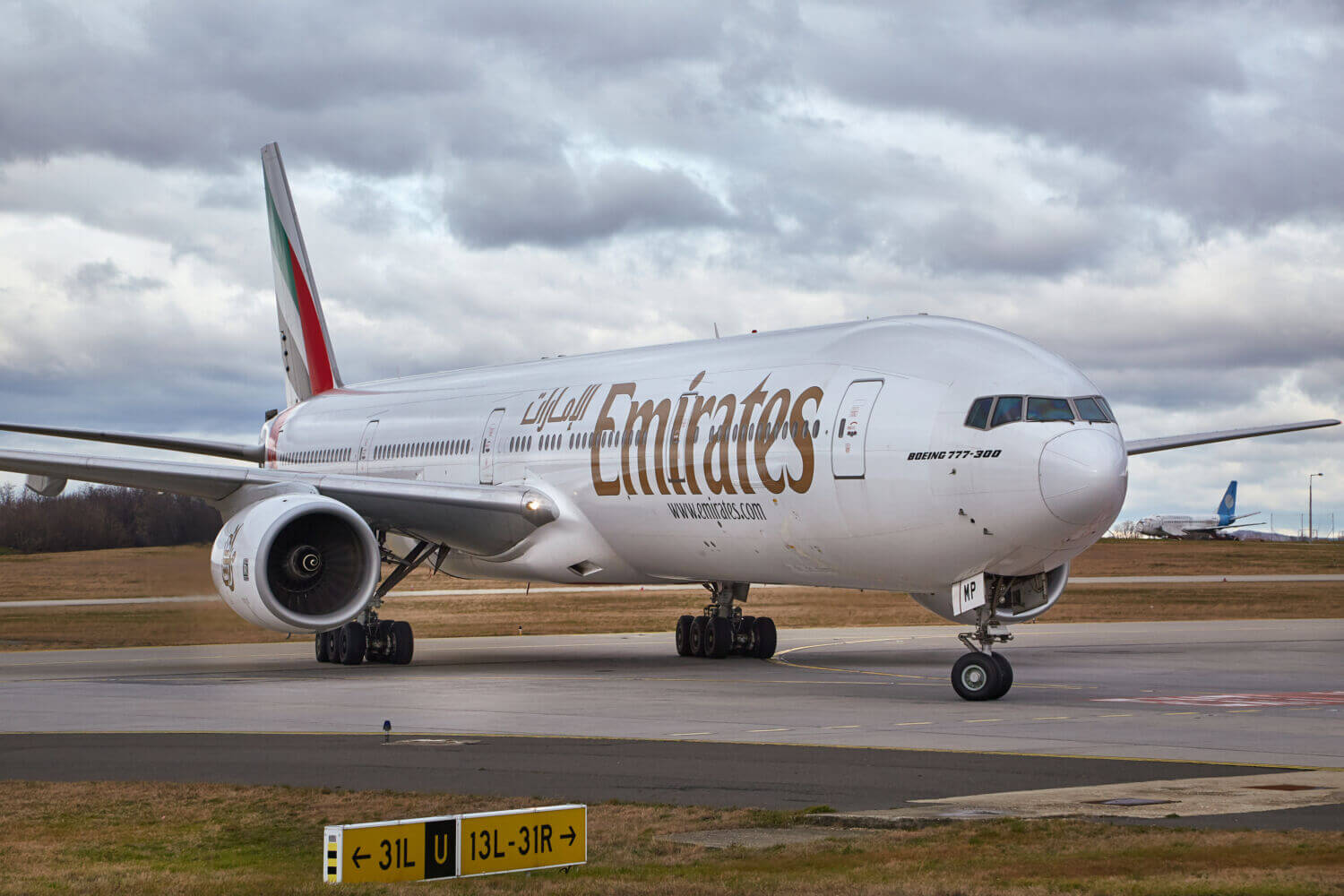
Pilot Rosters
One of the obvious challenges for a pilot is their roster. Being up at 4am or going to bed well past midnight is part of the territory.
A typical day for an airline pilot can vary considerably depending on the airline they fly for and the type of operation. Days can be very short or very long, be very busy or even be a bit boring.
Time Off as a Pilot
As a pilot, you do tend to get quite a lot of time off to allow you to recover between flights. The numbers of hours pilots can work a day/week/month/year are limited by regulations to avoid fatigue.
The job typically offers more days off than your typical Monday to Friday 9-5 job, and better holiday allowances. The downside to this is that you may find yourself seldom having a free weekend; little or no summer leave and bank holidays are just another normal working day. Whilst this may seem minor to some, having to miss Christmas or family a member’s birthday celebration year after year can take its toll.
Maintaining a normal social and family life can be a challenge as you may often find you have your time off when your friends are at work or your children at school.
The Aeroplane & the View
Being trusted to be part of an exclusive team which go to work and operate a state of the art multi-million-pound aircraft never gets boring. The satisfaction of flying a big commercial jet full of passengers to their destination, particularly when the conditions are challenging can be incredible.
You also get to see some truly fantastic sights from the air – sunrise at 35,000 feet or seeing the Northern Lights is something you will never tire of.
Health Implications for Pilots
There are ongoing debates about the occupation’s impact on long term health. Having a continuously changing body clock, being up during the circadian low and regularly experiencing jet lag (long haul pilots) all has negative effects on health.
Equally, spending a lot of time at a pressure altitude of 8,000 feet can be very fatiguing.
Other theories about contaminated cockpit air and cancer associated with solar radiation continue to circulate.
Short Haul Low Cost Pilot Life
Short-haul pilots for low cost airlines typically start and finish their day at their allocated base. They do not tend to do night stops and therefore can expect to be back at home for the night. Technical problems or weather issues down route can of course have an impact on the operation which could result in an unscheduled night stop.
Short haul flights might last anywhere from 30 minutes to 3 hours. Medium haul is defined as 3-6 hours.
There are usually two pilots on short haul flights, a First Officer and a Captain.
The roster is usually fixed with set days off, and this gives you the advantage of being able to plan your life in advance. The short haul rosters vary in stability depending on which airline you are working for. At some airlines, rosters might seldom change after they’ve been issued, but at other airlines, your roster might change reguarly which can limit your ability to plan your life.
Typical Short Haul Pilot Roster
Different airlines offer different opportunities. For example, a well-known European airline offers a 5 on 4 off roster at most of their bases, and there are no scheduled overnight stops. For some this can be great if you are at the base of your choice and want to be back home with your family every night, but can also be very challenging if you are based a long way from home and are commuting back and forth on your days off.
Rosters usually alternate from week to week, for example you will be on an early shift pattern one week, then switch to a late shift pattern the next.
Depending on the duration of the flight, short haul pilots can expect to fly between 2 and 6 flights a day. This has the advantage of having the opportunity to do plenty of manual flying (less use of the autopilot!) compared to operating on a long haul fleet where opportunities are less frequent. Short sectors can be demanding due to the high workload demanded on the flight crew – you have to fit a lot in a short amount of time.
As a low cost short haul pilot, you will operate to a range of destinations, often to smaller airfields that are less well equipped. This might mean having to fly visual approaches with less use of the autopilot.
Long Haul Pilot Lifestyle
A long-haul flight is defined as having a flight time of more than 6 hours.
Long haul pilots fly all over the world and can spend a lot of time away from home. Trips can last from a few days to over a week. The constant changing of time zones can be very fatiguing.
Long haul pilots will typically get more days off than short haul pilots due to the amount of time they spend away from home and thus the need to rest and adjust their body clocks.
To become a long-haul pilot, you would typically need to gain some experience as a short haul pilot. Long haul pilots might only get to land the aircraft a couple of times a month. To get to a skill level where you can achieve this, you require a good degree of previous experience flying short haul operations where take-offs and landings are frequent. This is why you typically progress from short haul to long haul operations.
There may be a number of pilots on long haul flights to allow the flight crew members to rest in the crew quarters on particularly long flights. Generally speaking, a long-haul pilot can expect to be paid more than a short haul pilot.
Check out our blog of a typical long haul flight from a pilots perspective.
Cargo Pilot Lifestyle
Cargo pilots typically fly at night and work more consecutive days than short haul passenger pilots. However they tend to get more time off as a result. West Atlantic for example, offer a one week on, one week off roster.
Corporate / Business Jet Pilot Lifestyle
Corporate pilots are required to be extremely flexible as they could be called to operate a flight at any time of day or night and to anywhere – you are often completely at the disposal of the customer or aircrafts owner.
Once you arrive at the destination specified by the customer, you could spend a number of days in a hotel without knowing when or where you will fly next. You may also have to do additional duties such as filing the flight plans, loading the aircraft and greeting the passengers. As a result of the flexibility required, corporate pilots are usually very well paid. Whilst they are on “standby” for long periods (often 1 – 2 weeks) you are then given roughly an equal time off.
Pilot Licences Explained
What licences you need to become a pilot
Gaining a clear understanding of what licences you need to become a First Officer with an airline requires a bit of reading. In short, to operate as a commercial airline pilot you need to hold either a licence called a frozen Air Transport Licence (ATPL) or an Multi-Crew Pilot Licence (MPL). We expanded on the details of each licence below to help give you a clear idea of the licences required to become a commercial airline pilot
Multi-Crew Pilot Licence (MPL)
An MPL allows you to operate as a First Officer / Co-pilot on a commercial passenger aircraft. The licence is a relatively new concept which has been introduced alongside the traditional frozen ATPL licence.
The biggest difference between an MPL and fATPL licence is that you can only complete MPL training with an approved training organisation having already been selected to join an airline specific training course (such as the easyJet or British Airways MPL Cadet programs). You can’t complete an MPL course unless you have been specifically selected to complete the course by an airline.
The practical difference between an MPL and a fATPL is the training syllabus. MPL training puts greater emphasis on airline specific, multi-crew training, with less time spent training the more traditional single pilot flying skills in light aircraft. As a result, do you do less real flying and spend more time in the simulator. You still learn the core flying skills, but more quickly progress towards the concept of multi-crew operations and instrument flying.
As a result, you don’t ever obtain a Private Pilot’s Licence (PPL) or a Commercial Pilots Licence (CPL) which is needed to operate commercially in a single pilot role.
You hold an MPL licence until you achieve 1500 hours of flight time, at which point you upgrade your licence to a full ATPL.
Holding an MPL can make changing jobs difficult, until you have upgraded to a full ATPL. An MPL holder must continue working for their sponsored airline and it is not easily transferable. It will typically take you about 2-3 years to gain the amount of flight time. This isn’t a problem during normal times as you will have been bonded to the airline who’s training program you were accepted onto. However, it could be an issue if the worst happens such as redundancy occurring due to an event like the Covid-19 pandemic.
Air Transport Pilot Licence (ATPL)
The more traditional route to becoming a Co-pilot / First Officer is to obtain a frozen Air Transport Pilots Licence (fATPL).
The fATPL isn’t a standalone licence, rather it’s a widely accepted summary that you have all the individual licences you need to operate as a First Officer on a commercial transport jet with an airline.
The fATPL consists of a number of individual licences and endorsements, all of which must be obtained in order to have a fATPL. This consists of
- 14 ground school examinations (ATPL Theoretical Exams)
- Commercial Pilots Licence (CPL)
- Multi Engine Instrument Rating (MEIR)
- Multi Crew Co-operation Course (MCC)
An ATPL is not as restrictive as an MPL in that you can free move between airlines (although you may require a new type rating as described later) and you can operate smaller passenger aircraft (8 seats or less) as a single pilot should you wish.
The frozen ATPL becomes “unfrozen” i.e., a full ATPL, when you have completed a total of 1500 hours total flying time, of which 500 hours must be multi crew environment i.e. flown in an aircraft which requires both a captain and first officer. You must be aged 21 or over for the licence to be unfrozen. You must hold a full ATPL to operate as a Captain of a commercial aircraft.
You can obtain all the licences and exams required to hold a fATPL at a flight school through either integrated or modular training.
Some airlines will also require you to have a type rating as a minimum requirement. This is a stand-alone endorsement to add to your fATPL which allows you to operate a specific type of jet transport category aircraft. This is described in more detail later.
Private Pilots Licence (PPL)
The entry level licence is called a Private Pilot’s Licence (PPL). This licence entitles the holder to exercise privileges as pilot in command of a light single piston aircraft (this basically means you can fly a small aircraft by yourself). The minimum age to hold a PPL is 17 years old. To obtain this, you need to complete a minimum of 45 flying hours, 10 of which must be solo hours, and 5 of which can be in a certified flight simulator. There are also 6 ground school exams which must be sat, of which the pass mark is 75%. Once your instructor deems you are ready and have met the minimum requirements, you will sit a flying test with a CAA examiner (it’s a bit like a driving test but in an aircraft). Although 45 hours is the minimum requirement, most people will generally need about 60-70 hours to reach the sufficient standard, some people needing more and some less. Again, depending on the person, the aim is to fly your first solo flight after just 15 hours of tuition.
It is not a requirement that you hold a PPL before obtaining a Commercial Pilots Licence (CPL), although many would argue that it is a good idea to do so in order to assesses whether you have the aptitude for it and more importantly whether you actually enjoy flying as much as you thought you would.
Commercial Pilots Licence (CPL)
The CPL is basically a more advanced PPL, requiring flying accuracy and a higher standard of airmanship. The holder of a CPL is able to act as pilot in command of a small piston engine aircraft that holds less than 9 passengers for commercial purposes such as revenue flights in visual conditions (VMC). The minimum age to hold a CPL is 18 years old.
The CPL is valid for multi engine aircraft only if the CPL skills test is passed in a multi engine aircraft, otherwise privileges are restricted to single engine aircraft. A CPL holder may only operate the aircraft in what are referred to as visual meteorological conditions (VMC – this basically means clear of cloud with the ground always in sight in good visibility). In order to be eligible to sit the CPL skills test with an examiner, the student must have completed 70 hours as pilot in command (or pilot in command under supervision) and flown the cross-country qualifier which involves a solo flight over 300 nautical miles, landing at two other airfields than the one you departed from. You obtain a CPL by passing a CPL skills test with an authorised examiner.
ATPL Theoretical Examinations (Theory)
You must have also of passed the following 14 ATPL theoretical examinations with a pass mark of 75% or greater. The ATPL theory subjects consist of the following:
- Air Law
- Aircraft General Knowledge – Airframe/Systems/Powerplant
- Aircraft General Knowledge – Instrumentation
- Mass and Balance
- Performance,
- Flight Planning and Monitoring,
- Human Performance,
- Meteorology,
- General Navigation,
- Radio Navigation,
- Operational Procedures,
- Principles of Flight,
- Visual Flight Rules (VFR) Communications.
- Instrument Flight Rules (IFR) Communications. (Only required to hold an IR)
A number of airlines regularly stipulate their preference for candidates who achieved over an 85% average pass mark, so in reality, this is the minimum you should be aiming for.
Instrument Rating (IR)
Fly an aircraft in conditions where you can’t see the ground, such as in or above cloud is referred to instrument meteorological conditions (IMC). In these conditions, you can’t fly the plane by looking out the window you have to fly through reference to the aircraft’s instruments without. This is called Instrument Flight Rules (IFR). In order to be qualified to operate IFR, you must first hold an Instrument Rating (IR). You can complete the instrument rating on either a single or multi engine aircraft, but to operate for an airline, you specifically need to hold a Multi Engine Instrument Rating (MEIR).
When training for the instrument rating, the instructor will place special screens up in the windshield of the aircraft, or the student will wear special goggles to ensure the student can’t see outside. The screens go up at about 400 feet above ground level and are removed when coming into land at about the same height. After take-off, the student must navigate only using the aircraft instruments and radio beacons on a predetermined routing. A typical route involves navigating to another airfield, making an instrument approach followed by carrying out a missed approach before navigating back to the departure aerodrome to land.
During this phase of training, much emphasis is placed on the student’s pilot in command capabilities, with a lot of training being conducted as Pilot in Command Under Supervision (PICUS). This basically means that whilst the instructor has the overall legal responsibility of the flight, the student is encouraged to act as the Pilot in Command (Captain).
In addition to the theoretical examinations required to pass hold a CPL, you must also pass the IFR Communications theoretical examination before obtaining your MEIR.
To obtain an IR you must have completed a minimum of 50 hours cross country flying under instrument flight rules (IFR) as pilot in command. When the candidate is deemed ready, he/she must complete a mock skills test (called a 170A) followed by an official skills test with an approved instrument rating examiner. The test requires you to fly a number of exercises with reference only to the aircraft instrumentation, including the routing as described as above.
Multi-Crew Cooperation Course (MCC)
The MCC phase of your training is designed to help make the transition from single pilot operation to multi pilot operation. Just about all commercial aircraft are operated with a minimum of two flight crew, a Captain and a First Officer, and have to work together effectively to ensure the safety of the operation.
The MCC course is comprises of both theoretical training and practical simulator training. The simulator used is typically a widely operated commercial aircraft such as a Boeing 737 or Airbus 320.
The course places a large emphasis on non-technical Crew Resource Management (CRM) skills such as decision making, teamwork and communication. It is the first time you are introduced to multi-crew standard operating procedures (SOPs) in an airline environment. The course usually consists of around 20 simulator hours and is very intense.
Some training organisations also include a Jet Orientation Course (JOC) as part of the MCC course. This shorter course is used to help develop the manual flight and automation managed skills needed to operate a large commercial jet aircraft.
Type Rating (TR)
A type rating is the endorsement to operate a specific commercial aircraft. The type rating has traditionally been provided by an airline once offered a job with that airline, but it is now becoming more common for the candidate to pay for the type rating him/herself when offered a job, or on completion of the ATPL training to become more employable.
A type rating is required to operate a specific aircraft that meets any of these requirements:
- Carries more than 9 passengers
- Has a maximum take-off weight of more than 5,900 kilograms
- Is a jet aircraft
To commence a type rating the candidate must have a valid instrument rating and have passed all 14 of the theoretical examinations.
One person can hold a maximum of two type ratings at any one time. There are some generic type ratings, for example a type rating on the Airbus A320 allows the holder to operate the A318, A319, A320 and A321. Similarly, completing a type rating on the Boeing 737 NG allows the holder to operate any of the B737 series, both classic and next generation (300-900).
Base Training
After completing your type rating, you’re ready to fly the aircaft for the first time. You take an empty aircraft up, and complete around 6 takes offs and landings (“touch and go’s) with a training captain. If you manage to complete the take-offs and landings to a good standard, the next time you fly the jet will be with passengers on board on day one of your Line Training.
Line Training
Line training is where you operate the aircraft as part of normal airline operations (i.e. with passengers onboard) but with a Captain who holds special training qualifications (termed a ‘Training Captain’) who is there to provide training, supervision and mentorship.
Line Training is the final phase of your flight training carried out to bring you up to “line standard”. Prior to this you will have only flown the aircraft once during your base training without passengers.
Line training typically takes between 30 to 80 sectors (flights) and you are signed off when you are deemed proficient with the airline SOPs, non-technical skills and aircraft handling. You are then released “to the line” where you will fly with normal Captains as part of standard crew. This is where the learning really starts, and you never stop throughout your entire career!
Pilot Medical Certification
The very first recommendation to any aspiring pilot is to obtain a JAA issue Class One Medical. This is a mandatory requirement for all flight crew in order to operate commercially. For a UK issue, the initial assessment takes place at the CAA medical centre located at London Gatwick Airport. You are tested for good general health, and any disqualifying conditions such as diabetes and colour blindness are identified. Unfortunately for some, this occasion may highlight an underlying medical condition which has not before been detected, and the medical certificate will not be issued. Some conditions are not necessarily disqualifying but may require further investigation and testing. After the initial issue, you are required to attend a medical assessment on an annual basis until the age of forty, then every six months until the age of 65 which is the age at which class one medical privileges are revoked. Items such as ECG and audiograms are retested at periodic intervals, increasing in frequency with age.
For those unlucky enough not to be able to obtain a class one medical, you may still be able to hold a class two medical which allows you to operate light aircraft with a private pilots licence (PPL). A class two medical is effectively a less stringent class one medical, with test renewals initially taking place every two years.
A commercial pilot is in complete reliance of maintaining his or her class one medical. The CAA may revoke it at any time, consequently grounding the pilot. This may be untimely, and can often cut a career short. For this reason, maintaining a fit and healthy lifestyle may well go a long way to prolonging a career.
There have been people who have invested significant amounts of money in obtaining a Private Pilots Licence (requiring only a class two medical), with the view to continue training towards a commercial licence, only to find that they were ineligible for a class one medical, and therefore unable to pursue a commercial career.
The Route to the Right Hand Seat
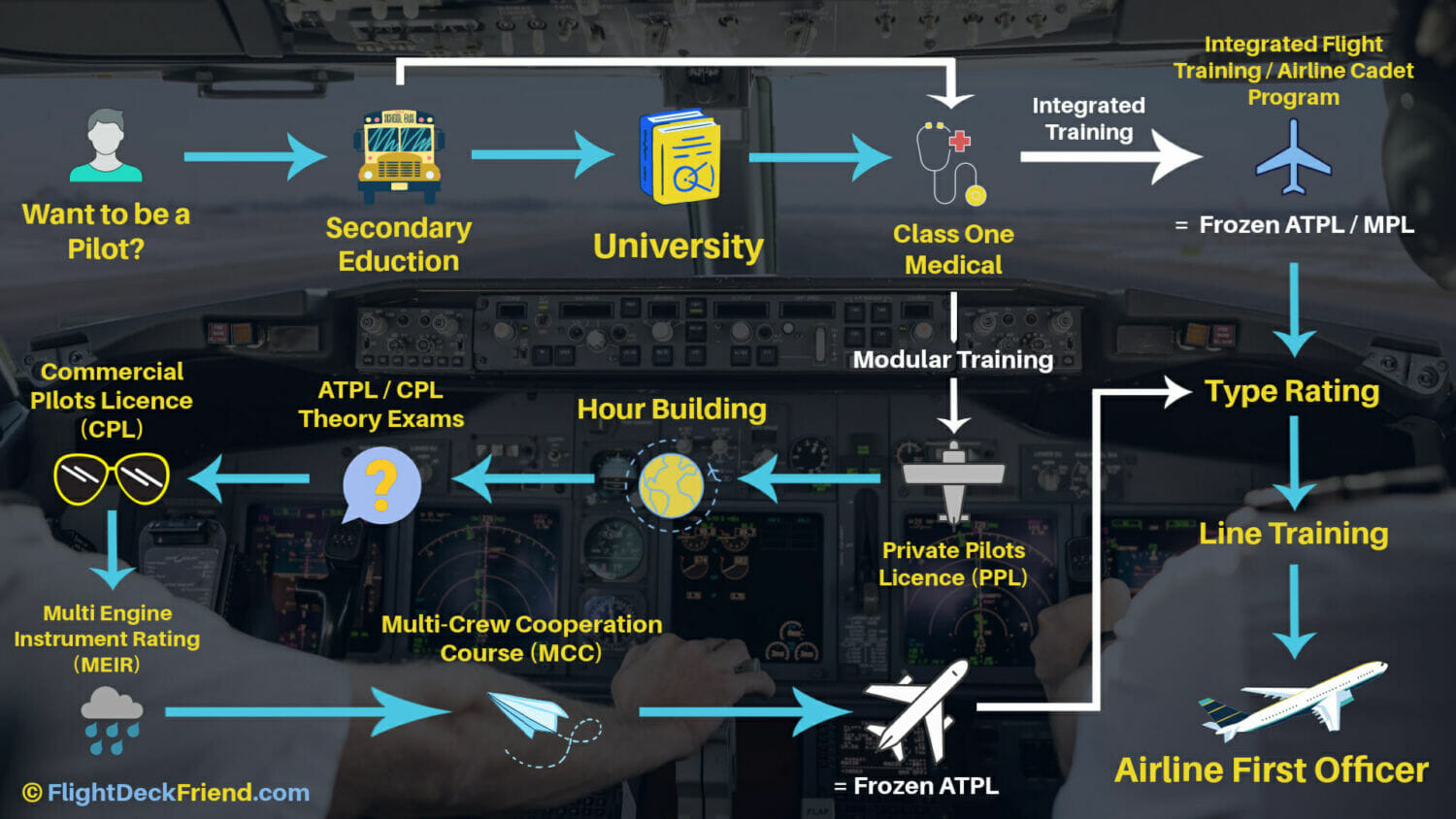
UK University Aviation Degree Courses
If you are seeking to pursue a career as a Commercial Airline Pilot, one of the first things to consider is “ Should I go to University or Not?” If you’ve come to the conclusion that yes, that is the route for you, then read on.
Over the last 15 years, Aviation Technology, Management and Pilot Studies degrees have become more and more popular. There is now a wide range such degree courses offered Universities across Europe. We have compiled a list of these degree programs for you to look at. Want to list a course? Email us the details.
Brunel University London
Aviation Engineering with Pilot Studies MEng
General information: “Becoming a pilot is one of the most exciting and rewarding of career choices. This specialist degree provides an ideal starting point for you to train to become a professional pilot after graduation. It incorporates fundamental practice and theory, but also presents the opportunity to obtain a Private Pilot’s Licence (PPL) and to undertake training in a flight simulator.”
Fees – EU/UK Students: £9,250 a year
Fees – International Students: £17,500 a year
Entry Requirements: A-Level grades AAA including Maths & Physics
Flying: Initial 15 hours towards NPPL, additional cost £3,075
Duration: 4 Years (5 year sandwich)
Buckinghamshire New University
BSc (Hons) Air Transport with Commercial Pilot Training
General information: “If you want to qualify as a commercial pilot, this dynamic course covers the many areas of air transport management and prepares you for a successful career as a commercial pilot. It is one of only a few UK universities to have an FNPT II Flight Simulator, which you will use during the final year of your studies, helping you to prepare for the final phase of your flight training.
Unique to the UK Higher Education sector, Buckinghamshire New University’s programme will allow you to obtain a university degree and a frozen ATPL in just three years of full-time study – at a lower cost than doing them separately”.
Fees – EU/UK Students: £9,250 a year + ATPL costs
Fees – International Students: £14,250 a year + ATPL costs
Entry Requirements: 104-128 UCAS Tariff score
Duration: 3 years
Buckinghamshire New University also offer courses in the following:
- BSc (Hons) Air Transport with Helicopter Pilot Training
- BSc (Hons) Air Transport with Private Pilot Training
- BA (Hons) Airline and Airport Management
- MSc Aviation Security
Kingston University, London
Aviation Studies for Commercial Pilot Training Foundation Degree FdEng and BSc (Hons)
General information: “This exciting foundation degree provides the opportunity to gain a recognised higher education qualification while acquiring the knowledge and some of the skills you will need to become a pilot. On successful completion of the foundation degree, you can top up to a BSc (Hons) degree.”
Fees – EU/UK Students: £9,250 a year
Fees – International Students: £13,400 a year
Entry Requirements: 80 UCAS points / 2 A-Levels
Flying: Yes, require 20 hours towards teh PPL to commence the course
Duration: 1/2/3 Years
Staffordshire University (Stoke-on-Trent Campus)
Aeronautical Technology BSc (Hons)
General information: “In the first year of your Aeronautical Technology degree, you could learn to fly a glider. You could also learn about propulsion systems, covering gas turbine engines, rocket engines and internal combustion engines.
Other specialist modules include flight technology – involving the study of aircraft flight control systems – subsonic and supersonic aerodynamics, crash investigation, flight deck controls, instruments and displays, navigation systems, material properties and selection, and computer-based design, analysis and simulation.”
Fees – EU/UK Students: £9,250 a year
Fees – International Students: £10,900 a year
Entry Requirements: A-Level BCC or CCC plus C at AS Level / UCAS 112 points
Flying: No
Duration: 3 Years
The University of Sheffield
Aviation Engineering (Private Pilot Instruction) BEng
General information: “Modules cover aero propulsion, aerodynamic design, aircraft dynamics and control, computational aerodynamics and project management. You’ll also take ground training for flight and five hours of flight training. Your study includes some experience of flight instrumentation and an individual investigative project of your choice.”
Fees – EU/UK Students: Approximately £9,000 a year
Fees – International Students: No fees mentioned
Entry Requirements: A-Level AAB including Maths & Physics
Flying: Yes, individual arrangements made
Duration: 3 Years
University of Hertfordshire
Aerospace Systems Engineering with Pilot Studies BEng (Hons)
General information: “The aerospace industry is increasingly in need of Systems Engineers with the skills to integrate modern communication systems with conventional aerospace systems to enhance aircraft performance. This variation to our Aerospace Systems Engineering degree can be the first step for those wishing to become professional pilots. It combines the multidisciplinary nature of the Aerospace Systems Engineering degree with pilot studies to a National Private Pilot’s Licence level and beyond.
The compulsory flying experience is mainly in the Fourth Year, provided locally by a nationally recognised flight centre either in the UK or the USA. There are additional fees for this, but with an attractively discounted rate compared to other flight centres. There are also opportunities to do some flying in the First and Second Years as an extracurricular activity, including use of various flight simulators.”
Fees – EU/UK Students: £9,250 a year
Fees – International Students: £11,850 a year
Entry Requirements: 104 UCAS Points / A-Level Maths and either Physics or Technology Subject.
Flying: Yes but no details provided
Duration: 3 or 4 Years
University of Leeds
Aviation Technology with Pilot Studies BSc
General information: “You’ll benefit from the training facilities and expertise of a professional flying school as you undertake ten hours of flight training, achieve the Civil Aviation Authority (CAA) ground exam requirements for the Private Pilot’s Licence (PPL) and develop the knowledge you need for commercial pilot ground exams. At the same time, you’ll gain a strong science and engineering base with modules on topics like aviation engineering materials. You’ll also put this knowledge into the context of the aviation industry today and in the future.”
Fees – EU/UK Students: £9,250 a year
Fees – International Students: £19,750 a year
Entry Requirements: A-Level grades AAA including Maths & Physics
Flying: 10 hours of PPL training included in cost, option to complete PPL
Scholarships: Up to £4,000
Duration: 3 Years
University of Liverpool
Aerospace Engineering with Pilot Studies BEng (Hons)
General information: “Pilot Studies lab The School of Engineering has a fantastic facility for undergraduate and postgraduate aerospace students to use.The interactive Pilot studies lab enables students to experience all aspects of flight from programming, aircraft design, navigation and system management to simulation flying in one of the three flight simulators; a jet stream 41, Piper PA38 and generic fast jet.”
Fees – EU/UK Students: £9,000 a year
Fees – International Students: £17,900 a year
Entry Requirements: A-Level grades AAB including Maths & Science subject
Flying: 20 hours towards PPL, additional cost £3,400
Duration: 3 Years
University of Salford
Aircraft Engineering with Pilot Studies BEng (Hons)
General information: “This course lets you combine the practical and theoretical aspects of flying with the underlying principles of aircraft engineering. The University has excellent facilities including three flight simulators, allowing you to benefit from the practical application of theories taught in the classroom. The course aims to produce graduates who can integrate theoretical and practical knowledge of maths, science, computer based methods, design, the economic, social and environmental context and engineering practice to solve complex aircraft engineering problems. You have the option to follow a structured pilot training programme leading to the opportunity to gain a Private Pilot Licence.”
Fees – EU/UK Students: £9,000 a year
Fees – International Students: £13,300 a year
Entry Requirements: 112-120 UCAS / A-Level grades C in Maths & Physics
Flying: PPL (45 Hours), at an additional cost of £7,608
Duration: 3 Years
University of the West of England (UWE), Bristol
Aerospace Engineering with Pilot Studies BEng (Hons) or MEng
General information: “This course has been designed alongside regional aerospace partners and is accredited by the Royal Aeronautical Society. This means you will be equipped with industry knowledge as well as an in-depth understanding of the aeronautical design and build process. Alongside the fundamentals of aerospace engineering, you will study materials and manufacturing processes, stress and dynamics, aerospace design, thermodynamics and fluids. Throughout the course, you will get practical experience developing and testing your prototypes in our well-equipped laboratories.”
Fees – EU/UK Students: £9,250 a year
Fees – International Students: £12,250 a year
Entry Requirements: A-Level grades B in Maths plus Science subject pass
Flying: Yes but no details provided
Duration: 3 Years
Can you Wear Glasses and be a Pilot?
Can you Wear Glasses and be a Pilot?
Yes, you can wear glasses and be both an airline pilot and military pilot, you don’t need to have perfect vision. There are many pilots who fly commercial jets and wear corrective lenses, it’s not usually prohibitive. However, you are required to have a certain minimum standard of vision which is assessed at your initial pilot medical examination and this continues throughout your career.
The minimum eyesight standards vary from country to country so if in any doubt, you should contact an Authorised Medical Examiner (AME) in the country that you anticipate completing your flight training in.
The United Kingdom Civil Aviation Authority state the following:
‘An applicant may be assessed as fit with hypermetropia not exceeding +5.0 dioptres, myopia not exceeding -6.0 dioptres, astigmatism not exceeding 2.0 dioptres, and anisometropia not exceeding 2.0 dioptres, provided that optimal correction has been considered and no significant pathology is demonstrated. Monocular visual acuities should be 6/6 or better.‘
‘Distant visual acuity, with or without correction, shall be 6/9 or better monocularly, and 6/6 or better binocularly.
Initial applicants who do not meet these requirements in should be referred to the licensing authority. A fit assessment may be considered following review by an ophthalmologist.
You will require a comprehensive ophthalmological examination on your initial assessment then every 5 years up to your 40th Birthday and then every 2 years.’
Reference: UK CAA Eye examination form MED.B.070.
Requirements for Pilots Who Wear Glasses
There are usually some specific requirements for pilots who need to wear glasses for their flying duties. It will be noted on a pilots medical certificate that they require glasses for their medical to be valid. This also tends to imply the following:
- Pilots are required to carry a spare pair of spectacles in their flight bag
- Pilots are not allowed to wear polarised glasses
- Bifocal contact lenses are not approved
